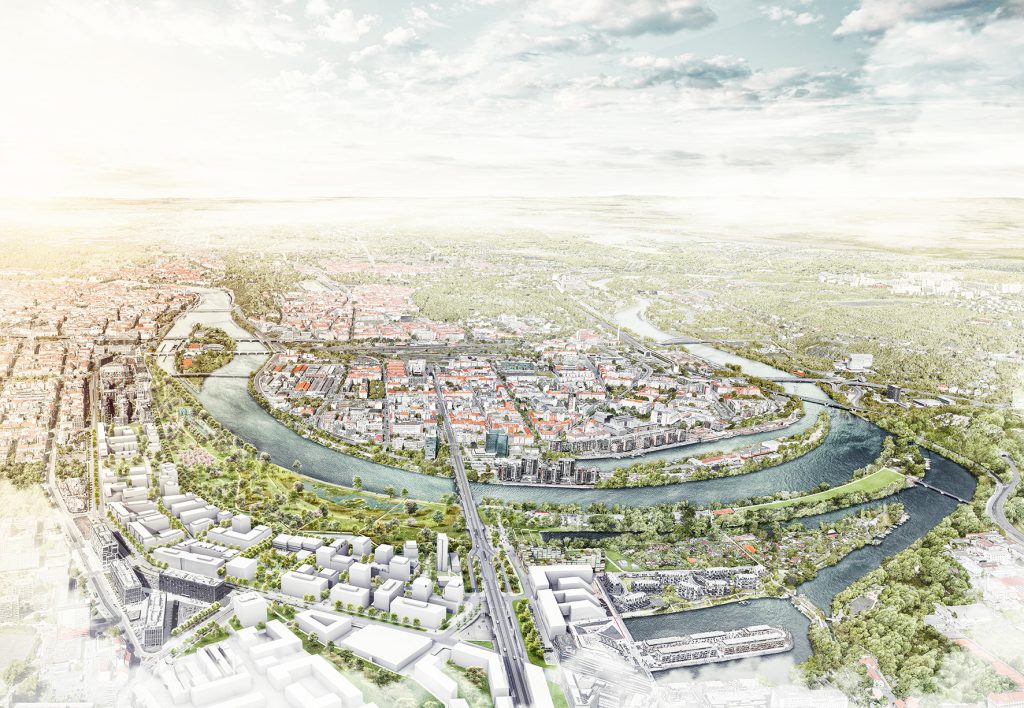Issues
11.07.20
Billboard
Skyscrapper
Halfpage
p. 26
Mannigfaltig, kosmopolitisch, schön
Prof. Dr. Sören Schöbel, TU Munich
- Wolfgang Haber: Landwirtschaft und Naturschutz, 2014, S. 57
- Immanuel Kant: Kritik der reinen Vernunft, 1781
- ders.: Idee zu einer allgemeinen Geschichte in weltbürgerlicher Absicht, 1784
- SenUVK: Basisbericht Umweltgerechtigkeit. Grundlagen für die sozialräumliche Umweltpolitik, 2019
- dies.: Charta für das Berliner Stadtgrün, Entwurf und Handlungsprogramm, 2019
- Wagner, Martin: Das sanitäre Grün der Städte, 1915
- Wenzel, Jürgen: Peter Joseph Lenné – Stadtplaner in weltbürgerlicher Absicht, in: Buttlar, Peter Joseph: Lenné – Volkspark und Arkadien, 1989, S. 69- 81
p. 54
Vielfalt fördern
Prof. Dr. Constanze A. Petrow
- Clare Rishbeth (2001): Ethnic Minority Groups and the Design of Public Open Space: An Inclusive Landscape? Landscape Research Bd. 26 Nr. 4, 351–366
- Jonathan Daly (2019): Superkilen: Exploring the Human-nonhuman Relations of Intercultural Encounter. Journal of Urban Design, https://doi.org/10.1080/13574809.2019.1622409
- Stadt Wien (2006): Integration im öffentlichen Raum. Werkstattberichte Nr. 82, Wien
- Anastasia Loukaitou-Sideris (1995): Urban Form and Social Context: Cultural Differentiation in the Uses of Urban Parks. Journal of Planning Education and Research, Nr. 14, 89–102
- Setha Low, Dana Taplin, Suzanne Scheld (2005): Rethinking Urban Parks. Public Space and Cultural Diversity. Austin
p. 60
Stadtgrün im (Klima)Wandel
Prof. Dr. Norbert Kühn
- Balder, H., Ehlebracht, K & Mahler, E., 1997: Strassenbäume: Planen – Pflanzen – Pflegen am Beispiel Berlin. Berlin: Patzer
- Bergmann, J., et al., 2010: The Iberian Peninsula as a potential source for the plant species pool in Germany under projected climate change. Plant Ecol 207, 191–201
- BMEL (Hrsg.), 2020: Ergebnisse der Waldzustandserhebung 2019. Bonn
- Böll, S., Albrecht, R. & Mahsberg, D., 2019: Stadtklimabäume – geeignete Habitate für die urbane Insektenvielfalt? LWG aktuell, 3-11
- Böll, S.; Schönfeld, P. & Körber, K., 2014: Stadtbäume im Zeichen des Klimawandels. In: Dujesiefken, D. (Hrsg.): Jahrbuch der Baumpflege 2014. Braunschweig: Haymarket, 155–170
- Brüggemann, N, Butterbach-Bahl, K., 2017: Biogeochemische Stoffkreisläufe. In: Brasseur, G. P., Jacob, D., & Schuck-Zöller, S.: Klimawandel in Deutschland. Berlin: Springer, 173-181
- Filewod, B., Thomas, S. C., 2014: Impacts of a spring heat wave on canopy processes in a northern hardwood forest. Global change biology 20(2), 360-371
- Holling, C. S., Gunderson, L. H., 2002: Resilience and adaptive cycles. In: Gunderson, L. H. (Hrsg.), Panarchy. Washington: Island press., 25-62
- IPCC 2018: Summary for Policymakers of IPCC Special Report on Global Warming of 1.5°C approved by governments (Post). https://www.ipcc.ch/2018/10/08/summary-for-policymakers-of-ipcc-special-report-on-global-warming-of-1-5c-approved-by-governments/ am 29.08.2019
- Kornhuber, K. et al., 2019: Extreme weather events in early summer 2018 connected by a recurrent hemispheric wave-7 pattern. Environmental Research Letters 14(5), 054002
- Liesebach, M., 2017: Eigenanzucht vs. Fremdanzucht von Gehölzen für historische Gärten im Klimawandel. In: In: Kühn et al. (Hrsg.)., Gehölze in historischen Gärten im Klimawandel. TU Berlin, Landschaftsentwicklung und Umweltplanung 131: 241-246
- Manion, P D., 1981: Tree disease concepts. Englewood Cliffs: Prentice-Hall
- Marx, A. et al., 2019: Climate Change as Driver for Ecosystem Services Risk and Opportunities. In: Schröter et al., Atlas of Ecosystem Services. Berlin: Springer, 173-178
- Pretzsch, H. et al., 2017: Climate change accelerates growth of urban trees in metropolises worldwide. Scientific Reports 7(1), 1-10
- Rabitsch W., Essl F., Beierkuhnlein C. & Jentsch A., 2013: Klima als Umwelt- und Überlebensfaktor. In: Essl F., Rabitsch W. (eds), Biodiversität und Klimawandel. Berlin: Springer, 30-49
- Roloff, A., Gillner, S. & Korn, S., 2008: Gehölzartenwahl im urbanen Raum unter dem Aspekt des Klimawandels. Sonderausgabe Grün ist Leben, 30-42
- Roloff, Andreas (2013): Bäume in der Stadt. Stuttgart: Ulmer
- Rose, L. et al., 2009: Are marginal beech (Fagus sylvatica L.) provenances a source for drought tolerant ecotypes? European Journal of Forest Research 128(4), 335-343
- Schönfeld, P., 2018: Welche Bäume sind zukunftsfähig. Pro Baum 03/2018: 2-9
- SenStadtUm (Hrsg.), 2013: Pflanzen für Berlin. Verwendung gebietseigener Herkünfte. Berlin, Kulturbuch
- Sjöman, H. et al., 2016: Diversification of the urban forest – can we afford to exclude exotic tree species? Urban Forestry & Urban Greening 18, 237-241
- Teskey, R. et al., 2015: Responses of tree species to heat waves and extreme heat events. Plant, cell & environment 38(9), 1699-1712
- Tomczyk, A. M., Bednorz, E., 2019: Heat waves in Central Europe and tropospheric anomalies of temperature and geopotential heights. International Journal of Climatology 39(11), 4189-4205
- von der Lippe, M. & Kowarik, I. (2014): Warum weiter mit dem Originalbaum? In: Wecke, C. & Weber, K. (Hrsg.): Wiedergeburt von Baumgiganten. Berlin: be.bra, 49–60
p. 90
Gerechte Zukunft für die Stadt
Dr. Henrike Knappe
- Talja Blokland, Vojin Šerbedžija: Gewohnt ist nicht normal: Jugendalltag in zwei Kreuzberger Kiezen. Logos Verlag, Berlin 018
- Christa Böhme, Arno Bunzel: Umweltgerechtigkeit im städtischen Raum: Expertise „Instrumente zur Erhaltung und Schaffung von Umweltgerechtigkeit“. DIFU 2014
- Elizabeth Dirth: Handreichung zur Zukunftsgestaltung: Ein Instrumentarium für die Reaktion auf Friday for Furture https://www.iass-potsdam.de/de/ergebnisse/publikationen, Institut für transformative Nachhaltigkeitsforschung, 2019
- Maarten A. Hajer, Ton Dassen, T. (eds.): Smart about cities: Visualising the challenge for 21st century urbanism. Nai010 Publishers, Rotterdam 2014
- Patrizia Nanz, Claus Leggewie: Die Konsultative: Mehr Demokratie durch Bürgerbeteiligung, Wagenbach 2016












